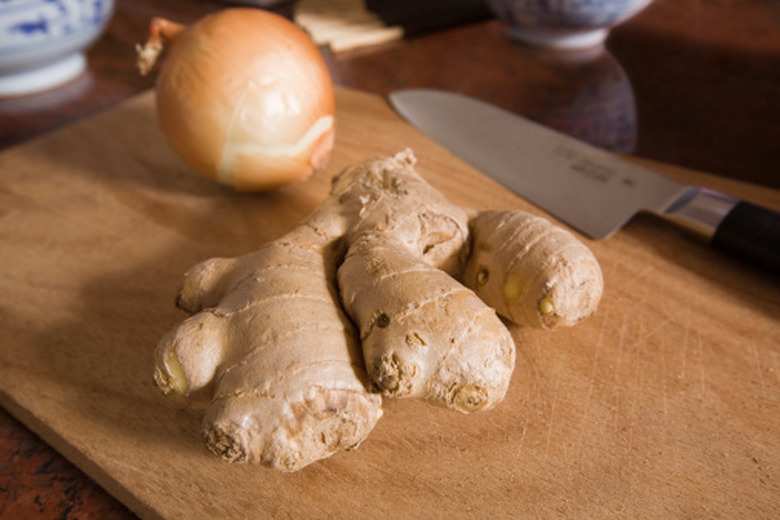How Long Does It Take To Grow Ginger?
Edible ginger takes eight to 10 months to grow to maturity. It thrives in tropical or subtropical climates — Hawaii is the only place in the United States where it is grown commercially on a large scale. Attempts to grow ginger commercially in south Florida have met with limited success, but there are promising results with small-scale production in greenhouses and high tunnels further north.
Tropical Ginger Production
In Hawaii and other tropical locations in the northern hemisphere, plant ginger in February for a December harvest. Wait for the foliage to dry out or turn yellow and for the stems to fall over. This will assure you are harvesting mature roots with relatively tough skin that stands up well to handling and transport. This method of production returns the highest yields and greatest profitability on a commercial scale.
Hydroponic Production
You can grow edible ginger much further north using greenhouse hydroponics. Researchers at Penn State Horticultural Research Farm in Rock Springs, Pennsylvania, successfully grew immature "baby" ginger — a gourmet crop — on a small scale by starting them in May in three-gallon containers of peat and perlite, then transferring them to noncirculating hydroponic beds when the stems are 3 inches long. The plants were fed with Chem-Gro 8-15-36, calcium nitrate and magnesium sulfate. Roots were harvested in October.
High Tunnel Production
The Penn State researchers also grew baby ginger in 10-inch deep peat/perlite raised beds under high tunnels. The root pieces were planted in mid-June and most emerged by early July. To encourage vertical rhizome growth, the root pieces were planted 1 or 2 inches deep at the bottom of 4-inch trenches. The peat/perlite mix was hilled around the plants as they grew. As with the hydroponic ginger, roots were harvested in October, after the first frost.
Turmeric Production
Edible ginger is not the only type of ginger plant. Turmeric is another member of the ginger family grown for its root, which makes a yellow spice popular in Indian dishes and used to make prepared mustard. Another tropical or subtropical plant, it is both hardier and more showy than edible ginger, with wide, deep green leaves. In areas with mild winters, like north Florida, the plant dies down in late fall, but returns in the spring.
